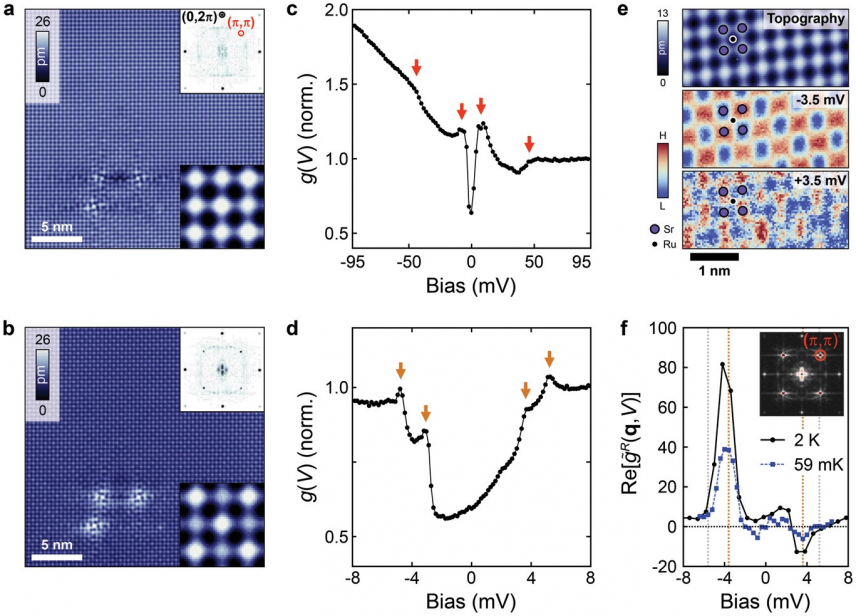Thanks to the Bilateral Project between CNR-SPIN and Royal Society of Edinburgh (RSE) (School of Physics and Astronomy, University of St Andrews), the researchers of the CNR-SPIN Institute participated in an international collaboration which also includes the Max Plank Institute for Solid State Research devoted to the study of strongly correlated electron materials in which, the electronic, spin, and charge degrees of freedom are closely intertwined.
This often leads to the stabilization of emergent orders that are highly sensitive to external physical stimuli promising opportunities for technological applications. In particular, the Researchers investigated by means of Scanning Tunnelling Microscopy (at low temperature and high magnetic fields) and from the theoretical point of view, the perovskite ruthenates compound (Sr2RuO4). This compound showed high sensitivity to external stimuli manifesting in dramatic changes of the physical properties with subtle structural details of the RuO6 octahedra, stabilizing enigmatic correlated ground states, from a hotly debated superconducting state via electronic nematicity and metamagnetic quantum criticality to ferromagnetism. In this study, it is demonstrated that the rotation of the RuO6 octahedra in the surface layer of Sr2RuO4 generates new emergent orders not observed in the bulk material. Through atomic-scale spectroscopic characterization of the low-energy electronic states, four van Hove singularities are identified in the vicinity of the Fermi energy. The singularities can be directly linked to intertwined nematic and checkerboard charge order. Tuning of one of these van Hove singularities by magnetic field is demonstrated, suggesting that the surface layer undergoes a Lifshitz transition at a magnetic field of ≈32T. The results establish the surface layer of Sr2RuO4 as an exciting 2D correlated electron system and highlight the opportunities for engineering the low-energy electronic states in these systems.
For reference:
“Magnetic-Field Tunable Intertwined Checkerboard Charge Order and Nematicity in the Surface Layer of Sr2RuO4“
Carolina A. Marques, Luke C. Rhodes, Rosalba Fittipaldi, Veronica Granata, Chi Ming Yim, Renato Buzio, Andrea Gerbi, Antonio Vecchione, Andreas W. Rost, Peter Wahl,
Adv. Mater. 2021, 2100593, https://doi.org/10.1002/adma.202100593


